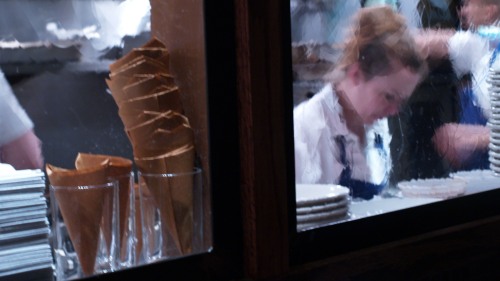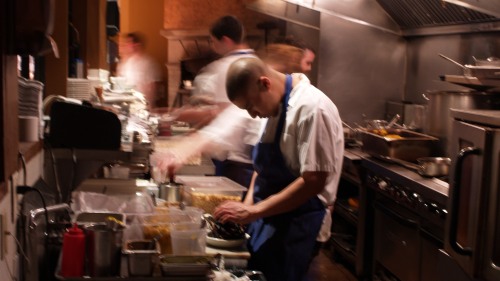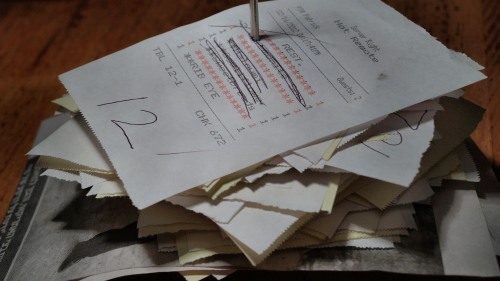Just a few years out of college, I had a job that required me to travel 90% of the time.
You read that right. 90% of the time.
I was twenty-four and jumping in and out of rental cars. I knew where to find the best-tailored suits whose wrinkles could be steamed away by a ten-minute sauna in a bathroom with a hot running shower and fogged-up mirror. I wore heels every day and never, ever ran in the airport to catch a flight. I developed a taste for “non-fat grande latte, please” and for pouring a few packs of sugar in the raw into iced coffee so each straw-sucked sip contained a tiny crunch. I learned to rely on Starbucks, but hope for anything else.
I tap danced to gain admission to a speakeasy in Milwaukee, missed a flight to see Taliesen West, and ate fresh french fries out of a vending machine in Boise. (Fried while you wait! 100% vegetable shortening!)
I drove past the Hollywood sign. I drove to Portland (Oregon) and learned for the first time the meaning of the word breathtaking. I drove from Los Angeles to San Diego and kept driving until I was mere inches from Tijuana. I drove a lot. This was pre-GPS.
As I dined in kosher restaurants in half the states across the US, the thrill of my corporate card quickly faded and I grew accustomed to the inquisitive looks, the furrowed eye brows, the slow smile. “Just one for dinner?” Or, “Are you waiting for the rest of your party?” And, “is anyone joining you?” I usually brought a novel, the companion to solo diners everywhere. This was pre-iAnything.
I’d often look around, stare off into space, sneak peeks at the other diners, listen to snippets of conversations. And then I’d return to my book. Hoping that my food would arrive. Reveling in my expense account, I ordered an appetizer and dessert to bookend my entrée. Returning to my trusty book between courses. In and out and back to my hotel room in less than an hour tops.
I was on the road again last week and I wrote this post sitting on a plane to Las Vegas after a quick stop in Philadelphia for a conference.
I haven’t even made it to sin city yet, but the hedonism has already begun.
Last night, I dined at Zahav.
Here’s how that evening of indulgence and decadence and intense pleasure went:
As my taxi rolled to a stop over cobblestone in the Society Hill neighborhood, I saw a soft glow from the restaurant set away from the street and perched atop a flight of stairs. The sign, its green lettering in a Hebrew-like font, let me know I had arrived.
Up the stairs and into the large yet somehow intimate room dressed in Jerusalem stone, I gave my name to the hostess and asked for a seat at the bar separated from the kitchen by a thick glass window. A mix of Israeli and reggae music played in the background. Just moments after settling onto my stool, I snuck out my not-so-inconspicuous camera and snapped a few shots through the glass, past stacks of dishes and bowls, to capture the action. Catching the eye of one of the cooks, I shyly smiled and shrugged, embarrassed that I was invading her space. She smiled back and shrugged too, welcoming me into her world.
Gaining courage, I kneeled on my stool, my face hidden from view by the rapidly clicking camera. When my waitress approached with the menu, I scrambled down, nearly falling off the stool.
She set before me a small dish of olives and pickles and a plate of za’atar, harissa, and schug to “season each of your dishes, as you like,” and explained that the food at Zahav is inspired by Israel and the Middle East but is far from traditional. “If you see something – like kugel – on the menu that you’ve eaten before, you probably won’t recognize our version.”
A few minutes staring at the menu with glazed-over eyes, I settled on the Tayim tasting menu (tayim means tasty in Hebrew) and selected my dishes guided by the recommendations of a friend who had eaten at Zahav the week before.
I started with a glass of Cinsault from Lebanon’s Bekaa valley (Chateau Mussar Cuvee Jeune, 2009) and a mint-flecked limonana.
A few minutes later, I scorched my fingertips tearing off a piece of still-steaming laffa, rolled up to preserve its heat. I pinched the laffa into the butter-swirled Turkish hummus in a pan too hot to touch.
I plucked from my tower of salatim each of the eight (eight!) cold salads. I started with spicy Moroccan carrots. Then cooling cucumbers. And a sip of wine. A piece of laffa spread with twice-baked eggplant. A spoon of taboule with huckleberries. A slurp of limonanna. A pinch of hummus. A spoon of beet salad. A bite of naked laffa.
I was dizzy by the time I reached salads six, seven, and eight.
I chatted with the waiters and waitresses, the manager, the hostess, the guy manning the fire-breathing oven. One of the waitresses asked if I wanted to come back into the kitchen.
I looked at her and all I could say was “!!!!!!!“
She led me around the corner, through the back prep kitchen, and dropped me off in front of the hearth. I watched an entire tray of dough systematically rolled out, slid into the mouth of the hearth, puffed and bubbled and crisped to perfection, wrapped around tongs, and laid down next to bowls of hummus resting on small squares of Israeli newspaper.
I watched “the new guy” working the line on his first night, having only started in the kitchen mere hours before I arrived. The other chefs patiently directing him, correcting him. He joked that I had as much right to be in that kitchen as he did. I blushed. And a small part of me hoped that, like him, I belonged.
I chatted up the woman manning the grill, as people passed from the prep kitchen to the front kitchen, bearing more trays of soft laffa dough and metal containers of sliced vegetables.
I followed plates and bowls as they moved down the counter in a procession: a smear of sauce, a scoop of grains, a sprinkle of vegetable, a gleaming protein. I watched the delicate choreography of cooks, calm yet quick, turning from counter to oven to counter again.
Stomach grumbling, I went back to my stool, my blue napkin folded neatly into a pyramid next to my fork and knife.
Within minutes, my mezze arrived. Each was a party of opposites – savory and sweet, crunchy and smooth – an adventure in every mouthful. First, a plate of delicate orange persimmon slices sprinkled with crumbled not-too-salty feta, thinly sliced radish, and olive tapenade. Next, cauliflower fried to a golden brown scattered over a green pool of labne with chive, dill, mint, and garlic.
As I lifted my first glistening forkful of persimmon, I was surprised by a third dish, delivered “compliments of the chef.” Small cubes of crispy haloumi cheese surrounded by roasted squash, date purée, and lemon-tinged apple matchsticks.
I cleared my plate. Well, plates. And watched as my al ha’esh – a skewer grilled “over the fire” – approached. It was a landscape of trumpet mushrooms over couscous, covered with a fried egg trimmed into a perfect circle.
Halfway through the mushrooms, another bowl arrived with a few bites of that evening’s specialty grilled dish. And another glass of wine.
Finally, dessert and coffee. I ordered the kataifi – crispy threads of phylo wrapped around Valrhona chocolate and topped with mango.
Topped also with labneh ice cream. This ice cream deserves its own sentence. Perhaps its own paragraph. It was a slightly sour, slightly sweet, creamy delight that coated my palate in sheer delicious.
Deeply sated, I wandered around the restaurant, sneaking peeks at the other diners and their dishes, eavesdropping on snippets of conversation. Checking out the kitchen from the other side of the bar, chatting with the waiters and waitresses again. Not wanting the evening to end. Despite having finished my meal.
I returned to my stool for my last sips of now-cool coffee and found my blue napkin again folded into a pyramid and placed next to a final gift from the kitchen. A second dessert. Semifreddo – light airy caramel ice cream sandwiched between two crisp pistachio cookies in a pool of cherry and topped with a dab of dulce de leche.
In case you’re counting, that was eight salatim, one hummus, one laffa, three mezze, one and a half al ha’esh main courses, and two desserts.
And I ate it. I ate it all.
The novel I carried never made it out of my purse. My dining companion was Zahav – the restaurant, the food, the staff, the atmosphere. I felt a little bit like family.
Zahav: 237 Saint James Place Philadelphia, PA 19106
Note: Zahav is not a kosher restaurant, however they refrain from cooking pork, shellfish, or meat and dairy in the same dish.




































